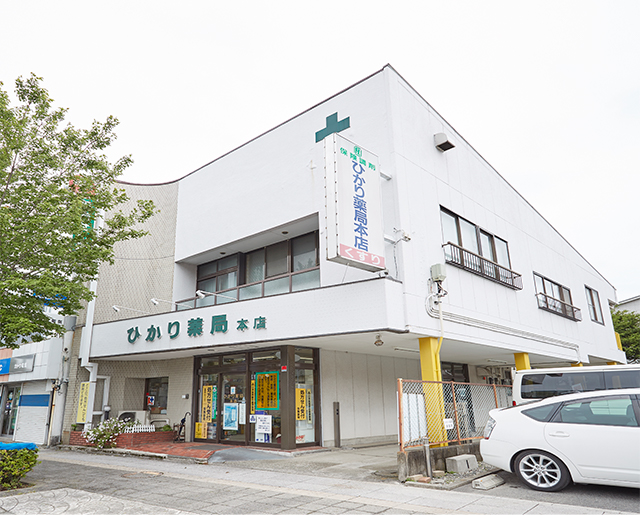- TOP
- Product
- User Reports
- Hikari Pharmacy Main Store (Kanagawa Prefecture)
Hikari Pharmacy Main Store (Kanagawa Prefecture)
Interviewee: Ayaka Kamiya, Director of Hikari Pharmacy Co., Ltd.
Interviewer: Kazuaki Mori, Manager of Sales Planning Department, Yuyama Co., Ltd.
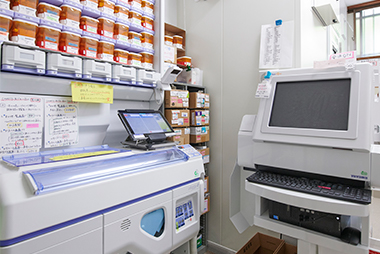
UC and TabSight Supports Safe Dispensing for Patients in Long-term Care (LTC) Facilities
Charty Automatic Dividing Packaging Machine (UC compatible) + TabSight Packed-Tablet Inspection Machine
The Hikari Pharmacy main store is firmly rooted in community health care and support. In this interview, Ms. Kamiyama, the company director of Hikari Pharmacy and a certified home care pharmacist (P03-0027. Certified by The Japanese Association of Home Care Pharmacies), discusses how pharmacists can better contribute to the pharmaceutical treatment for patients. We asked her about the dispensing equipment she uses in her pursuit of bettering home health care. The answer was a combination of the Universal Cassette (UC) and TabSight. We find out the reasons why in this interview.
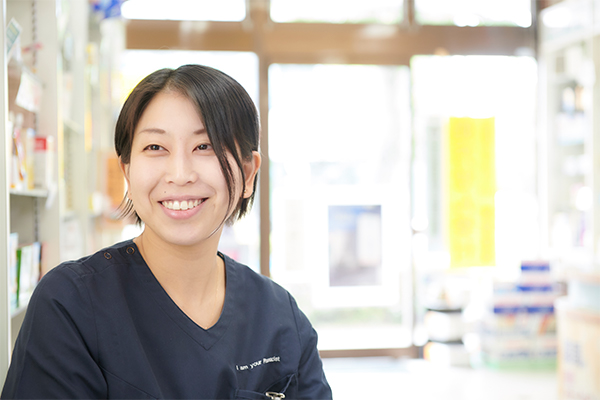
Can you give me an overview of the Hikari Pharmacy main store?
Our pharmacy is situated in between two clinics; an otolaryngology (ENT) clinic and a pediatric clinic. These two clinics account for about 90% of our prescriptions, and we typically receive more than 100 prescriptions per day, sometimes as many as 180 during the winter months. We have three to five pharmacists who handle prescriptions, which are mostly powdered medicines and aqueous solutions, since we are dealing mostly with ENT and pediatrics outpatients.
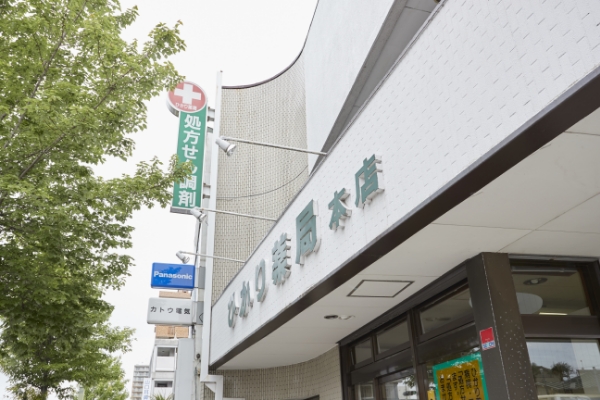
Ms. Kamiyama, you are also active as a certified pharmacist for home care by The Japanese Association of Home Care Pharmacies.
That’s right. I am currently in charge of 85 home care patients, including 5 medical-at-home care patients, 70 patients in special nursing care LTC facilities, and 10 private nursing home patients. I would say that home health care services account for about 10% of our total pharmacy work and I expect this will increase in the future.
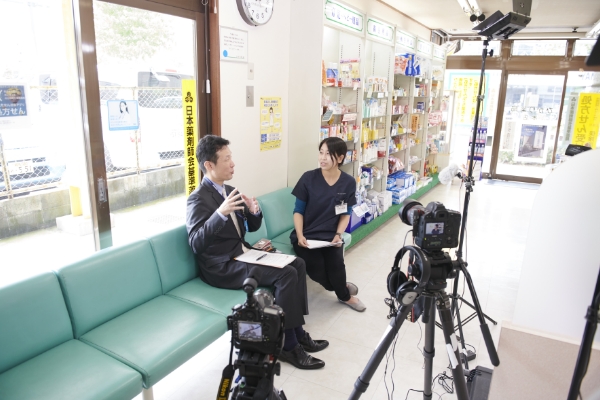
This is very promising! I hear that you are actively using the UC to dispense tablets for home patients, regardless of the shape or size of the tablet.
Yes, originally it took me half a day to manual dose package tablets for 20 people every week using the powder medicine packaging machine (Yuyama Charty). I thought about retrofitting a tablet cassette behind the Charty, but there were more tablets than cassettes, so I’d still have to manually dispense the ones that did not fit. That would be pointless. At that time, I heard from a sales representative that a UC was about to be released. Most home patients suffer from chronic conditions and their physicians are eager prescribe new medications on the market. And, when the medications change, we also need to change the cassettes to accommodate them. The UC was the perfect fit for the situation.
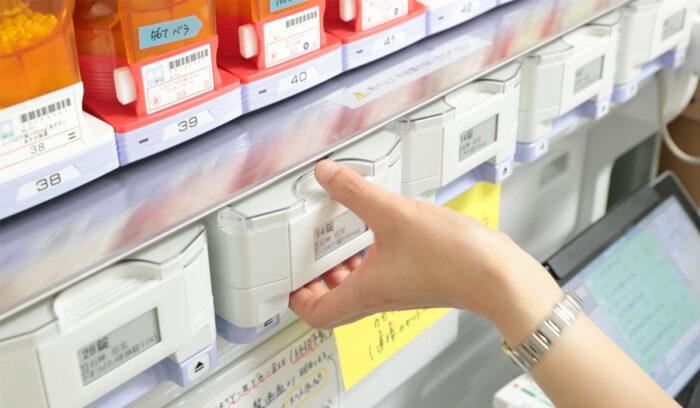
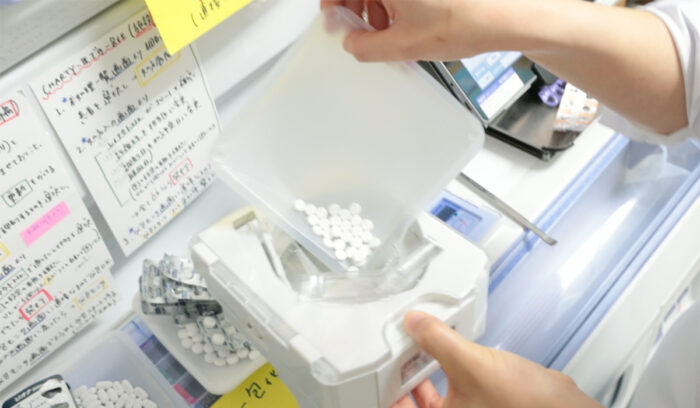
Timing is the important. There are five UCs, but how many do you usually use each time?
I usually use about one to three, but on busy days, I will use all five. Sometimes I need more than five. Most patients on single-dose tablets are patients in home care programs, so they tend to increase the number and type of medications. All of the 45 fixed cassettes except the UC are being used, so I’m taking full advantage of the UC equipped Charty.
How much have you reduced manual dose dispensing, since introducing the UC? What is your impression?
I rarely do manual dose dispensing now. If I do, then it is for a half-tablet for one of the twenty patients in LTC facilities. I am impressed by the lack of errors and sense of security it provides. A UC cannot be retrieved without confirming it against the GS1 data bar, so it there is no way to make a mistake.
You also introduced TabSight Packed-Tablet Inspection Machine at the same time as taking full advantage of the UC.
Yes. I inevitably use TabSight to inspect prescriptions for home patients. In principle, single-dose tablet prescriptions can be made up a week in advance as regular prescriptions. However, doing the inspections is draining and time-consuming. As I mentioned earlier, it takes about three hours just to examine the tablets for 20 patients. Now that an operator (non-pharmacist) enters the data into the TabSight registry in advance, it is much easier mentally and physically.
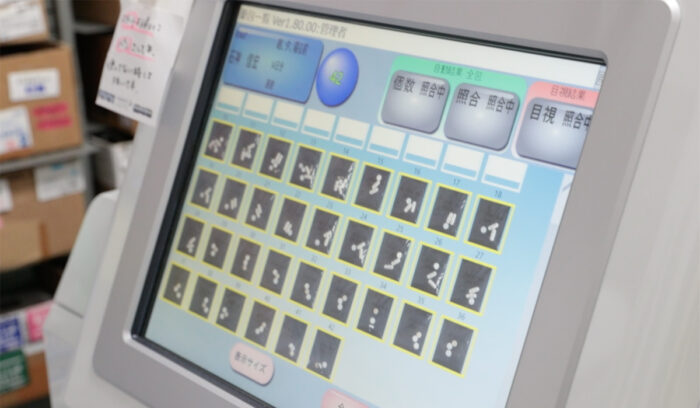
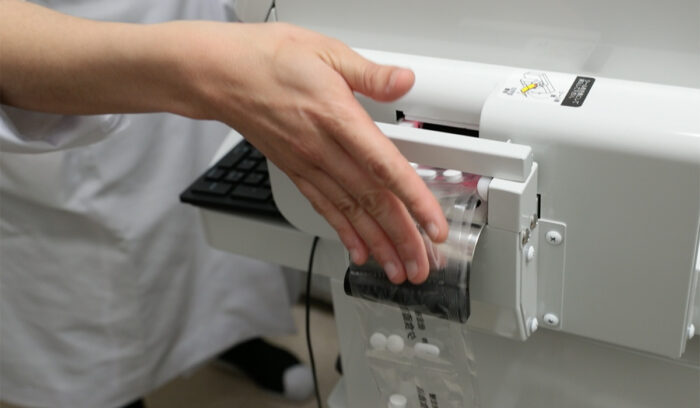
Which is the main factor in making things easier?
The TabSight and the UC work together. The UC will only dispense tablets that match the GS1 data bar, which eliminates tablet errors. I then use the TabSight in the tablet count (inspection) mode to verify quantities. Having the UC to verify the tablet brand makes a big difference.
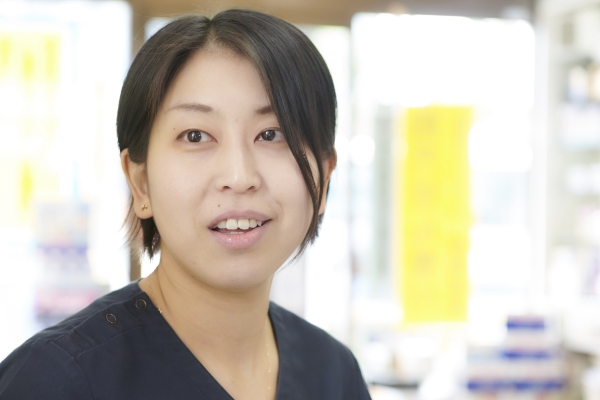
Seems the UC + TabSight is big asset for pharmacies dealing with a large volume of single-dose medications.
Yes. In that regard, the image verification feature on TabSight is a huge asset. For home patients, we often dispense four weeks’ worth of medications at once. For a patient on four tablets per day, that amounts to 112 single-package tablets. Checking the tablet images that TabSight alerts me to is much easier and more secure than trying to fight my way through 112 packages alone. I told you that I am alone looking after 85 patients, right? This would be impossible without the excellent operators, TabSight, and UC (laughs).
Ms. Kamiyama, thank you talking with us today.
Hikari Pharmacy Main Store (Kanagawa Prefecture) is such a place.
Hikari Pharmacy is located about a 15-minute walk from Odawara Station on the Odakyu Electric Railway line, along the main road stretching toward the sea in area surrounded by tourist attractions such as the famed Odawara Castle.
The company director of Hikari Pharmacy, Ms. Kamiyama, who joined us for the interview, is a board member of the Odawara Pharmaceutical Association and is actively involved in community health care as a pharmacist. Ms. Kamiyama works closely with prescribing physicians and medical staff who treat patients in LTC facilities, accompanying them on weekly nursing home visits where she rotates the visiting floor each week. This includes checking on inpatients on floors without a physician. She also consults with nurses and performs percussion examinations, based on the prescription content, to identify areas for attention. Her efforts in patient care have led to more meticulous medication proposals from prescribing physicians. The use of dispensing robots has further enabled Hikari Pharmacy to balance their outpatient ENT and pediatric care services.
Information as of May 2018


